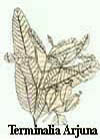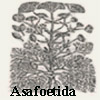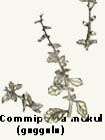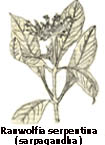Pancha koshas According to ayurveda, there are five distinct sheaths or koshas.
1. The food sheath or annamaya kosha
2. The vital sheath or air sheath or pranamaya kosha
3. The mental sheath or manomaya kosha
4. The intellectual sheath or vignanamaya kosha
5. The bliss sheath or anandamaya kosha
Before we go into a minute study of the composition and nature of various sheaths, we will try to understand the philosophical implications of the term ‘interior’ when we say that one sheath is interior to the other, we only mean that the inner one is subtler than the outer. The subtlety of a sheath is measured by its pervasiveness. Eg : Four cubic inches of ice could melt into water which can be spread to a larger area and hence philosophically we say water is subtler than ice. If we heat that water it could get converted into steam that can spread itself into the entire atmosphere of the room and we say steam is subtler than water. Similarly the physical body is the grossest. The vital air that we take in can be blown out to pervade a greater area than that which is occupied by the body. So we consider the vital air sheet subtler than gross food sheath.
Food sheath or annamaya kosha
The physical body which everyone of us is fully aware during our waking state of consciousness is termed as food sheath. The substance of the physical structure, rising from food, existing in food and going back to food naturally is termed as food sheath.
The vital sheath or air sheath or pranamaya kosha
The air that we breath in gets mixed up with the blood and reaches every cell of our body. The vital air sheath controls all the organs of action, according to the different function it performs. Ayurveda has classified it under the panchapranas.
The mental sheath or manomaya kosha
None of us is entirely unaware of the existence of a mind in us. Mind is the seat that entertains our emotions, joy, doubt, fears etc. Mind can go in its flights to things and places seen or heard because of it vast reaches, it is considered subtler than the above said or mentioned.
The intellectual sheath or vignanamaya kosha
Very often, we find that the mind and intellect are considered one and the same. But in ayurveda intellect or budhi is considered subtler than mind because it adventures forth into realms farther than what it had heard before or seen. Intellect is the decision maker.
The bliss sheath or anandamaya kosha
This sheath is the seat of pure joy or bliss that transcends all known experiences of oneself before. It happens in a deeper state of consciousness.
1. The food sheath or annamaya kosha
2. The vital sheath or air sheath or pranamaya kosha
3. The mental sheath or manomaya kosha
4. The intellectual sheath or vignanamaya kosha
5. The bliss sheath or anandamaya kosha
Before we go into a minute study of the composition and nature of various sheaths, we will try to understand the philosophical implications of the term ‘interior’ when we say that one sheath is interior to the other, we only mean that the inner one is subtler than the outer. The subtlety of a sheath is measured by its pervasiveness. Eg : Four cubic inches of ice could melt into water which can be spread to a larger area and hence philosophically we say water is subtler than ice. If we heat that water it could get converted into steam that can spread itself into the entire atmosphere of the room and we say steam is subtler than water. Similarly the physical body is the grossest. The vital air that we take in can be blown out to pervade a greater area than that which is occupied by the body. So we consider the vital air sheet subtler than gross food sheath.
Food sheath or annamaya kosha
The physical body which everyone of us is fully aware during our waking state of consciousness is termed as food sheath. The substance of the physical structure, rising from food, existing in food and going back to food naturally is termed as food sheath.
The vital sheath or air sheath or pranamaya kosha
The air that we breath in gets mixed up with the blood and reaches every cell of our body. The vital air sheath controls all the organs of action, according to the different function it performs. Ayurveda has classified it under the panchapranas.
The mental sheath or manomaya kosha
None of us is entirely unaware of the existence of a mind in us. Mind is the seat that entertains our emotions, joy, doubt, fears etc. Mind can go in its flights to things and places seen or heard because of it vast reaches, it is considered subtler than the above said or mentioned.
The intellectual sheath or vignanamaya kosha
Very often, we find that the mind and intellect are considered one and the same. But in ayurveda intellect or budhi is considered subtler than mind because it adventures forth into realms farther than what it had heard before or seen. Intellect is the decision maker.
The bliss sheath or anandamaya kosha
This sheath is the seat of pure joy or bliss that transcends all known experiences of oneself before. It happens in a deeper state of consciousness.







